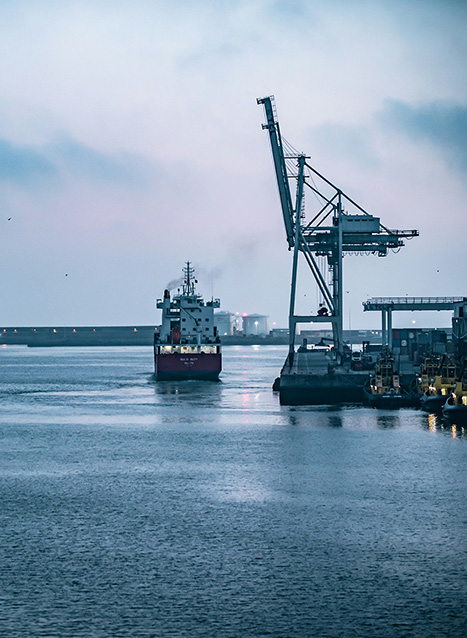
Maritime Security Transit Corridor
8 Sep 2017
The Combined Maritime Forces have announced the Maritime Security Transit Corridor (MTSC), a two-way route connecting the Internationally Recommended Transit Corridor (IRTC) and the Bab El Mandeb (BAM) Traffic Separation Scheme (TSS). The MTSC consists of the IRTC, the BAM TSS, and the TSS West of the Hanish Islands. The update is in response to the increase in suspicious approaches and attempted attacks on vessels transiting the Bab El Mandeb and Gulf of Aden in 2017.
Key Points
- The Combined Maritime Forces have announced the Maritime Security Transit Corridor (MTSC), a two-way route connecting the Internationally Recommended Transit Corridor (IRTC) and the Bab El Mandeb (BAM) Traffic Separation Scheme (TSS).
- The MTSC consists of the IRTC, the BAM TSS, and the TSS West of the Hanish Islands.
- The update is in response to the increase in suspicious approaches and attempted attacks on vessels transiting the Bab El Mandeb and Gulf of Aden in 2017.
Situation Summary
Maritime: The MSTC is the recommended transit route for all merchant traffic transiting the Gulf of Aden and Bab El Mandeb Strait. International naval forces focus their presence and surveillance efforts along this corridor, and are therefore able to monitor and provide swift assistance to vessels in distress. The announcement of the MSTC has had no impact on the timings of group transits or escorted transits of the IRTC; these will continue as normal and the IRTC end points will remain the same. Overall, vessel operators remain responsible for conducting risks assessments on each voyage and to implement BMP4 measures to the fullest extent possible. This applies to vessels transiting from the Gulf of Aden to the Red Sea and vice versa, between 44E in the Gulf of Aden and 13N in the Southern Red Sea. There is a heightened threat when transiting the Bab El Mandeb at night, due to the threat of being mistargeted by Houthi missiles. On the other hand, recent suspicious approaches have been reported during daylight hours.
Solace Global Comment
Although there have been no successful hijacks on large commercial vessels this year, the spike in activity indicates the threat towards merchant shipping remains considerable. The armed attack on the MT Muskie whilst transiting the Bab El Mandeb on 31 May 2017 being one of the most significant. The OS 35, attacked and boarded on 8 April 2017, was the first large bulk carrier to be boarded by Somali pirates in recent years in the Gulf of Aden. The attempted attack on the Costina, also in April, indicates a continued desire from Somali pirates to target larger vessels, and the high risk of transiting in close proximity to Somalia’s coastline. So far in 2017, a number of dhows have been hijacked, in addition to the small tanker Aris 13. Smaller vessels with low freeboards, and limited security mitigation measures, continue to be vulnerable to piracy attack.
The conflict in Yemen has increased maritime security threats in the High Risk Area by Houthi fighters targeting coalition vessels with missiles, most of which occur at night. However, coalition vessels have also conducted targeted attacks on Houthi vessels during daylight hours. Houthi fighters are also reported to have deployed Waterborne Improvised Devices near ports, such as Al Mokha. There has been a standing UKMTO advisory notice regarding the threat of coastal naval mines since early February 2017. On 25 April 2017, the Saudi Royal Navy reported that it had destroyed a remote-controlled explosive boat advancing towards the Jizan region of Saudi Arabia. In July 2017, a Houthi attempt to target Al Mokha port using a water-borne improvised explosive device was reported in the media. No injuries were reported although the device was reported to have collided with a pier. The result is that the conflict in Yemen is producing increasing maritime threats, including the potential for maritime terrorism.
SECURITY ADVICE
Maritime PiracyHighVessels transiting the HRA should maintain a heightened level of surveillance, particularly when passing through the Bab El Mandeb Strait. Houthi fighters have primarily targeted coalition warships, particularly at dark hours. There have been numerous reports of attacks and suspicious approaches on merchant vessels transiting the Bab El Mandeb Strait. Houthi naval mines have also been reported uncovered and diffused along Yemen’s coastline. It is advised all vessels transiting the HRA to proceed with extreme caution and conduct a thorough risk assessment on each voyage, considering the risk of transiting the strait during daylight or dark hours. Vessels should ensure all BMP4 measures are in place, with the use of hardening vessel measures, and embarked armed security teams. It is also recommended for vessels to transit the High Risk Area using the Maritime Transit Security Corridor. Solace Global advise, and have implemented, 24-hour anti-piracy watches when transiting the strait.